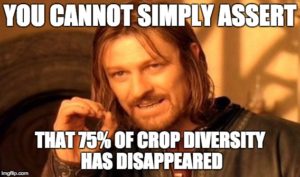Susan Bragdon sounds frustrated:
It seems like the studies at least both confirm the dynamism in managing and developing landraces. One would expect some to go out of use and new landraces to emerge (good reason, amongst others, to have ex situ collections to have “snap shots” over time). I know I am saying nothing new to this audience, but in international circles — even some parts of the international world specifically addressing biological diversity (I can tell you about the Human Rights Council Resolution on Biological Diversity adopted in March as an example) — the idea that farmers are more than preserving a static pool of genetic resources is not well-understood. And don’t get me going on understanding the links to health, employment, peace…
What brought this on now, Susan? And if you want a platform for discussing those links, we do take guest posts.
